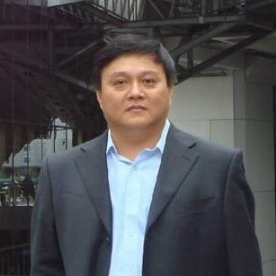Tunneling and Underground Engineering: From Theories to Practices
A special issue of Applied Sciences (ISSN 2076-3417). This special issue belongs to the section "Civil Engineering".
Deadline for manuscript submissions: closed (30 August 2023) | Viewed by 96989
Special Issue Editors
Interests: tunneling; underground engineering
Interests: tunneling; risk analysis; machine learning; face stability; random field
Special Issue Information
Dear Colleagues,
We are inviting submissions to a Special Issue on Tunneling and Underground Engineering: From Theories to Practices.
It can be seen from the urbanization process of developed countries that when the level of urbanization reaches 50%, a series of problems (e.g., urban population congestion, traffic congestion, environmental pollution) will intensively erupt. To meet the ever-growing needs of urban development and social activities, tunnels and underground development spaces have become the best solutions. After nearly a hundred years of development, modern tunneling technology has made tremendous progress. In the process of continuous development, many advanced research results have been formed from theory to practice. With the continuous innovation of technology, tunneling and underground engineering is also developing towards a trend of higher water pressure, larger cross section, and greater depth.
The purpose of this Special Issue is to create a channel for knowledge sharing of fundamental mechanics theory and advanced tunnel construction technology. Both theoretical and engineering applications are welcome, as well as comprehensive reviews and survey papers.
Prof. Dr. Dajun Yuan
Dr. Dalong Jin
Dr. Xiang Shen
Guest Editors
Manuscript Submission Information
Manuscripts should be submitted online at www.mdpi.com by registering and logging in to this website. Once you are registered, click here to go to the submission form. Manuscripts can be submitted until the deadline. All submissions that pass pre-check are peer-reviewed. Accepted papers will be published continuously in the journal (as soon as accepted) and will be listed together on the special issue website. Research articles, review articles as well as short communications are invited. For planned papers, a title and short abstract (about 250 words) can be sent to the Editorial Office for assessment.
Submitted manuscripts should not have been published previously, nor be under consideration for publication elsewhere (except conference proceedings papers). All manuscripts are thoroughly refereed through a single-blind peer-review process. A guide for authors and other relevant information for submission of manuscripts is available on the Instructions for Authors page. Applied Sciences is an international peer-reviewed open access semimonthly journal published by MDPI.
Please visit the Instructions for Authors page before submitting a manuscript. The Article Processing Charge (APC) for publication in this open access journal is 2400 CHF (Swiss Francs). Submitted papers should be well formatted and use good English. Authors may use MDPI's English editing service prior to publication or during author revisions.
Keywords
- tunneling
- underground construction
- tunnelling mechanics
- risk assessment
- construction management
- monitoring and maintenance
- underground information modelling
- machine learning in underground engineering
Benefits of Publishing in a Special Issue
- Ease of navigation: Grouping papers by topic helps scholars navigate broad scope journals more efficiently.
- Greater discoverability: Special Issues support the reach and impact of scientific research. Articles in Special Issues are more discoverable and cited more frequently.
- Expansion of research network: Special Issues facilitate connections among authors, fostering scientific collaborations.
- External promotion: Articles in Special Issues are often promoted through the journal's social media, increasing their visibility.
- Reprint: MDPI Books provides the opportunity to republish successful Special Issues in book format, both online and in print.
Further information on MDPI's Special Issue policies can be found here.







